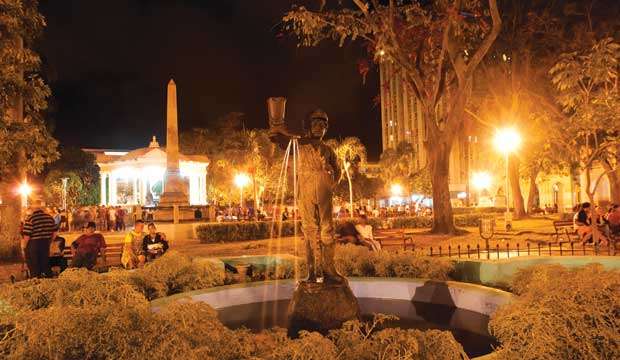The townsfolk of San Juan de los Remedios, tired of the imps, demons and witches that were overwhelming them, joined together to find a solution. Some wanted to stay and defend their territory, but not bathe in the rivers or leave the house late at night…or close their eyes.
After years of uncertainty, some families from this colonial villa decided to settle farther inland, where no mythical beings or corsairs or pirates could reach them easily. They left behind many legends and stories and two churches they had built, right in the middle of the villa, dedicated to the Virgen del Buen Viaje (the Virgin of Good Travel).
More than 40 km from their native land, they built their new homes on the Antonio Díaz cattle ranch, on the hill of Loma del Carmen, and in the shade of a tamarind tree, they founded what is now the city of Santa Clara on July 15, 1689.
Catholics to the core, they were soon occupied with the construction, using lumber and palm thatch, of the church that would mark the high point of the new settlement. When their financial situation permitted it and after the population had grown, they rebuilt the little parish church in 1725—this time with bricks and tiles.
The wealthiest citizens contributed jewelry and money, and hired bricklayers, carpenters and turners. Other residents who were too poor to do more than feed themselves offered their labor, so that everyone could have a nice church for practicing their religion.
According to documented memoirs from that era, the newly-built church, called the Iglesia Parroquial Mayor, had a single nave and two side chapels. It also had a bell tower with four bells: two small, very old ones and two larger ones that were at one time the best on the island. People said that their incredible sound owed to the vast number of gold and silver jewelry and coins, along with copper from the mines of Maleza, used to cast them.
Masses, baptisms, weddings…they all took place peacefully until 1907, when local
authorities began to consider expanding the park located at the city’s center, because Santa Clara had become the capital of Las Villas province.
In that park, from the times of Santa Clara’s founding—when there were few families, there were more trees than roads, and houses were made of palm thatch, not concrete blocks—was the Parroquial Mayor, which the city’s founders had built with so much effort.
Local residents feared for the church’s existence in 1911, when a music gazebo was built just a few feet from the church, in what would later be the center of the plaza. The Iglesia Parroquial Mayor’s
demolition was imminent.
On August 22, 1923, they began to demolish it. Father Tudurí decided to rebuild. (The impetus of that priest was so strong that, one day, he appeared before the Cuban president at the time, Gerardo Machado, and asked for his help to rebuild the Parroquial Mayor. The president refused, and they say that without losing his composure, Tudurí predicted, “Never mind, Gerardo. Santa Clara will collect from you on that.” Interestingly, President Gerardo Machado lost power on a subsequent August 12, while the city of Santa Clara was celebrating the feast day of patron saint Santa Clara de Asís.)
In the place formerly occupied by the church tower, a statue of Marta Abreu, city benefactress, was unveiled in 1924.
All that is left of the Iglesia Parroquial Mayor are some old photos and the stories of elderly people here and there who remember it. Today Santa Clara has four Catholic churches, but none of them are in the historic quarter. Meanwhile, San Juan de los Remedios, the original villa that led to the founding of Santa Clara, still has its two churches in the same park, despite the imps, demons and witches.










